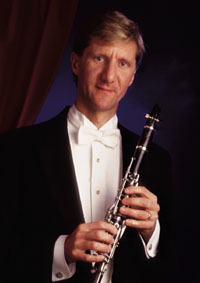So what?! It doesnít matter a pile of feathers who's with the conductor if itís not together. Many musicians, good ones, donít understand this basic fact of life in an orchestra. You have to factor in delay time for acoustics and human response time. So staying with the conductor is not the blanket solution. But itís not rocket science, either.
Thereís a clear hierarchy of leadership in the orchestra. The concertmaster leads not only the first violins, but also has some leadership of the other string sections. Within each string section, its principal is leader. So, 1st and 2end violins, violas, cellos, basses, have their own leaders. The same applies to every other section. In the woodwinds, the oboe is usually the leader of the whole section, while each section leader is responsible for that section. The brass are similar, with the trumpet leading all the other leaders of the various brass sections. The French Horns tend to be their own section, influencing both the brass and woodwinds.
So how do all those leaders stay together? Well, the conductor leads the way, giving the musical gestures and tempo and style indications. Then each section leader must interpret to make sense of it for their sections. The section leaders moderate and codify the conductorís lead. For example, if the conductorís tempo is simply too fast or erratic for a section, the leader may take the sensible path and lead a steadier, more playable tempo. The other sections will follow suit.
Within each small section, the players must follow both the conductor and their section leader. In other words, they get information from both and make sense of it within their group. Itís easier in the woodwinds, where there are only a few players in each section. The second oboe will always defer to the first oboe, no matter what the conductor does. And when the flute and oboe play together, since they are both leaders, they will work out their own hierarchy of leadership.
The leaders have to develop courage and tenacity to lead their sections in times of crisis. Occasionally a conductor will get lost or befuddled, and the section leaders have to become conductors, literally swaying in time to show where the beat it.
All this processing takes some time, so thereís an inevitable delay from the time a beat is given by the conductor and the resulting music follows in the orchestra. As a kid seeing a live orchestra or the first time, I thought it was rude and lazy of the orchestra to play so far behind the conductorís beat. Now I know why. In order to get 80-100 people in lock step doing a subtle ballet of ever changing music, it takes time.
Like a huge, delicate machine, the orchestra undulates in subtle response to the various leads within it. Like a flock of birds or a swarm of insects, the group will stay together no matter what. At least it should, if the professional hierarchy is intact. But thatís another post.




